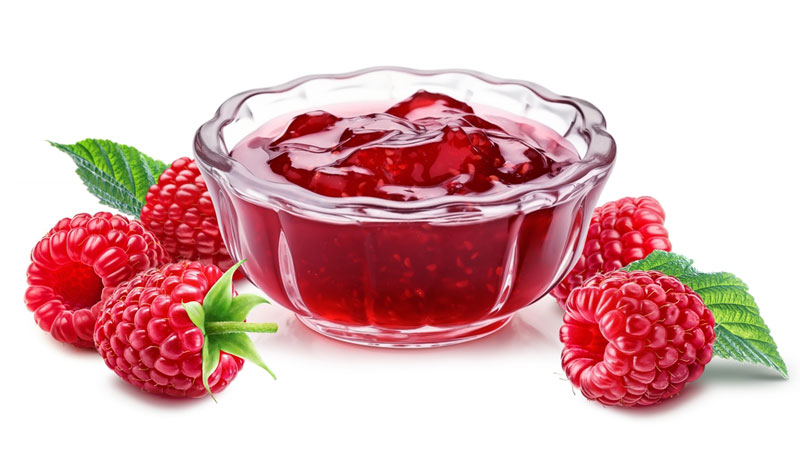Can cats eat jelly? It’s a question that might swirl around in our minds, especially when we see our feline friends pawing at our snack bowls. The fun answer is a little complicated, but the short response is no, cats should not eat jelly. While jelly isn’t toxic to cats, it’s not particularly good for them either.
Jelly is largely made from sugar and fruit, which cats, being obligate carnivores, don’t need in their diets. They thrive on meat-based proteins, and their bodies are not equipped to handle sugar like ours are. So, while you might think sharing a little jelly treat with your kitty could be fun, it’s best left on the table instead of in their tummy.
We invite you to keep reading to explore why jelly isn’t a good fit for our purring companions, what could happen if they nibble on it, and some safer alternatives to treat your furry friend. Get comfy, grab a cup of catnip tea, and let’s dive into the world of cat foods together!
Can Cats Eat Jelly?

To break it down further, while jelly isn’t poisonous to cats, we should be cautious. Cats, with their unique dietary needs, don’t process sugary substances well. Have you ever noticed how they seem to gravitate towards your food? That’s because they’re curious little creatures! But curiosity can lead them to foods that aren’t beneficial to them.
When it comes to jelly, the sticky sweetness comes from sugar, and cats don’t require sugar in their diet. Their natural diet consists mainly of proteins found in meat. Their digestive systems are not designed to break down sugars, and feeding them sugary treats can lead to health issues like obesity, dental problems, and even diabetes. None of us want to see our beloved pets on the doctor’s table because we decided to share our sweet snacks.
Another aspect to think about is that jelly often contains preservatives and artificial flavors that may not be safe for our fur babies. Ingredients like xylitol, commonly found in sugar-free products, can be particularly harmful to pets. While most jelly does not have xylitol, it’s crucial to check the ingredients before offering any type of treat to your cat.
How Much Jelly Can Cats Eat?
If you find yourself in a situation where your cat has snacked on jelly, the good news is that a tiny amount isn’t likely to cause immediate harm. However, what does “a tiny amount” even look like? We’re talking about a smear no bigger than a pea. Caution is crucial—large quantities, or repeated snacking, can add up and lead to digestive distress or worse.
As loving cat owners, our priority should always be our pets’ health and happiness. Ensuring that our cats have balanced diets filled with essential nutrients is vital. If you’re looking for a way to treat them, consider alternatives such as meat-based treats designed for felines. You can usually find these at your local pet store.
In practice, we should keep an eye on our portions. Just like with people, moderation is key. even if jelly does make a surprise appearance in our kitty’s life, it’s not something that should be become a regular feature on their menu. We have plenty of delicious and nutritious ways to spoil our furry pals without dipping into the sugary stuff!
Some cat treats can even be homemade! Chicken bits, fish treats, or even specialized cat snacks can provide the extra love they crave without any harmful side effects.
Benefits Of Jelly To Cats
1. Cats do not gain nutritional benefits from jelly since it lacks essential proteins. Our furry friends rely on high-protein foods to support their growth and upkeep, making a diet rich in meat far more beneficial.
2. As we have already mentioned, the sugar in jelly can lead to weight gain. In turn, this weight can lead to further health issues down the line such as heart problems and diabetes. By avoiding sugary treats, we can help our cats maintain a healthy weight!
3. Cats are known to be picky eaters. Introducing new foods can sometimes cause upset stomachs in our furry companions. Keeping their diets consistent helps prevent unnecessary gastrointestinal distress.
4. Providing jelly instead of appropriate cat treats could teach them to expect sugary snacks. This creates a habit that is very difficult to break. Before we know it, our cats will have us hand feeding them favorite foods that are simply unhealthy.
5. By focusing on healthier alternatives, we can turn treat time into a bonding experience. Choosing the right treats encourages good behavior and ensures our cats know they are loved and cherished. Why not whip out some lovingly prepared cat treats and watch their faces light up?
Dangers Of Feeding Jelly To Cats
While it may seem harmless, jelly can indeed pose risks for our beloved felines. As a caring pet owner, it is important to recognize these potential dangers. We’ve already touched on how jelly can contribute to excessive weight gain. Carrying extra pounds can lead to several ailments affecting their overall health.
Another pressing concern involves the unnatural ingredients that many commercial jellies contain. Chemicals added for taste preservation can cause adverse reactions in some cats. Some cats may even develop allergies to certain food components. Monitoring your cat’s reactions when introducing any new food is vital, including jelly!
Dental health is another area where jelly can play a negative role. Cats aren’t known to have the best dental hygiene habits, and introducing sugary foods can lead to a build-up of plaque which can turn into dental disease. We wouldn’t want our fur babies to undergo any painful procedures, would we?
Additionally, if cats start to prefer sugary treats, like jelly, over their standard, wholesome food, this could lead to serious nutritional deficiencies in the long run. Without a balanced diet, our cats may become lethargic, gain unneeded weight, and suffer from other health problems.
Lastly, let’s not forget about the artificial flavors found in many jelly products! Cats have sensitive stomachs, and these strange ingredients could lead to digestive discomfort. Some cats may even experience vomiting or diarrhea if they consume inappropriate foods.
Substitute Of Jelly For Cats
1. Catnip: Instead of jelly, why not try some catnip? Most cats adore catnip, which can provide them with a little energy burst and a lot of entertainment! It’s safe and healthy for them, and they’ll likely go crazy for it.
2. Chicken and Turkey: bits are often a winner among felines. You could easily cook some chicken, shred it, and serve it to your whiskered friend as a protein-packed treat they will love!
3. Cooked Salmon or Tuna: Many cats enjoy fish. Cooked salmon or tuna (without any oil or seasoning) can be a tasty treat. Just make sure not to give them too much at once as it shouldn’t replace their regular meals.
4. Commercial Treats: There are commercial treats available specifically designed for felines! Take a quick stroll down the pet aisle at your grocery store, and you’ll find various delectable and nutritious options tailored just for them.
5. Homemade Snack: For an exciting homemade snack, freeze tuna or chicken broth in ice cube trays. This icy treat offers hydration and tasty goodness—your cat will surely appreciate the effort!
Can Cats Eat Jelly? Frequently Asked Questions
What Happens If A Cat Eats Jelly?
If a cat eats a tiny amount of jelly, they will likely be fine. However, larger quantities can cause digestive upset and weight gain over time.
Is It Safe To Give My Cat Jelly Once In A While?
While an occasional taste might not be harmful, it’s advisable to stick to regular cat snacks. Their health is our priority!
What Can I Do If My Cat Eats Jelly?
Keep an eye on them for any adverse reactions and consult your vet if you notice unusual behavior or any illnesses.
Are There Any Cat-safe Treats?
Absolutely! Many treats are designed specifically for cats, and you can also offer them bits of cooked chicken, tuna, or catnip!
Should I Tell My Vet About My Cat Eating Jelly?
If it was a small amount, you probably don’t need to worry. However, informing your vet can help ensure your feline’s health is closely monitored.
Final Thoughts
In conclusion, while jelly might seem like a fun treat for our cats, it’s essential to prioritize their health above all. The risks and dangers of feeding them jelly far outweigh any temporary excitement they may experience. Remember, our pets rely on us to keep them safe and healthy, so keeping their diet as close to nature as possible is a wonderful way to show we care.
Please explore other topics related to feline diets and health! You may find interesting insights on what other foods cats shouldn’t have, or discover more about what dogs can snack on safely. Caring for our pets is an adventure we share, filled with joy, laughter, and sometimes a wee bit of confusion. Let’s keep learning how to support our furry partners as best we can!


